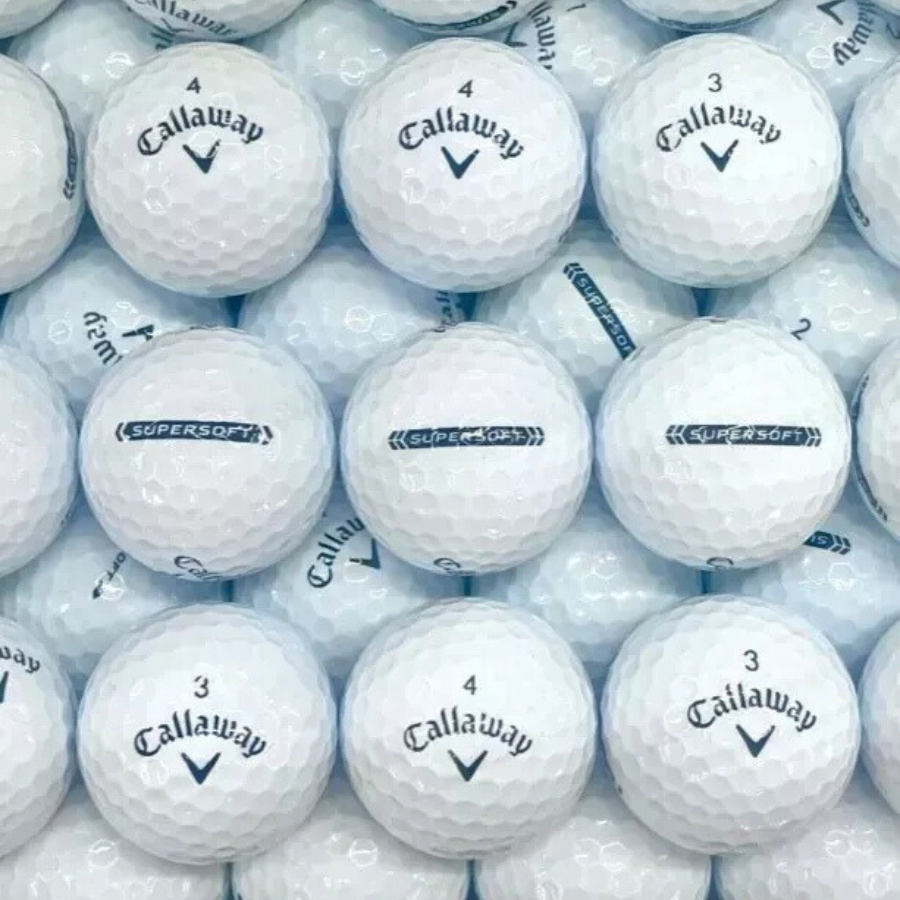
How Far Can You Really Hit A Golf Ball? See How You Compare
Golfers love distance, it’s the stat everyone asks about after a round. But how far can the average golfer really hit a golf ball compared to tour pros? And more importantly, what factors determine your distance?
It’s not just about swing speed. The ball you play, the clubs you use, your golf tees, and even your accessories like a proper golf glove can make all the difference.
This guide breaks down average distances by club, and how different swing speeds affect carry.
By the end, you’ll get to know how your shots compare to others and what equipment can help you maximize distance.
Average Distances by Skill Level
Golfers often overestimate their distances. A shot you think flew 300 yards might really be 250. Here’s a realistic breakdown:
Driver Distances
• PGA Tour pros: 295-310 yards average.
• LPGA Tour pros: 245-260 yards average.
• Amateurs: 195-210 yards on average.
For everyday players, shots longer than 250 yards are rare. This shows tour-level numbers are outliers, not benchmarks.
Iron Distances
|
Club |
Average Male |
Average Female |
PGA Tour |
LPGA Tour |
|
7-Iron |
140–155 yards |
110–125 yards |
172–180 |
140–150 |
|
5-Iron |
160–175 yards |
130–140 yards |
195–205 |
155–165 |
|
9-Iron |
115–130 yards |
95–105 yards |
140–150 |
115–125 |
Insight: The majority of golfers stand much closer to LPGA distances than PGA distances, proving that ball and equipment fitting matters more than chasing unrealistic numbers.
What Determines Golf Ball Distance?

Several factors affect how far golf balls travel:
• Swing speed: Faster swings generate more compression.
• Launch angle: Optimized trajectory increases carry.
• Spin rate: Too much spin leads to ballooning flights.
• Ball type: Premium models like Titleist golf balls or Taylormade models maximize efficiency.
• Tees and setup: Using the right wooden golf tees height ensures consistent contact.
Even the best golf balls for beginners increase distance by providing low-compression cores that make it easier to launch. Thus, testing different balls can reveal unexpected gains.
How Golf Balls Affect Distance?
The type of ball you use plays a central part:
• Titleist AVX: Lower ball flight, designed for soft feel and longer carry.
• Bridgestone e6: One of the most distance-optimized models for slower swing speeds.
• Maxfli Tour S: A hidden gem offering balanced carry distance and spin.
• Callaway golf balls like Chrome Soft X: Excellent for distance + control blend.
Comparing Tour and Amateur Players
|
Player Type |
Average Driver Distance |
Ball Choice |
|
PGA Tour Pro |
300+ yards |
|
|
LPGA Tour Player |
250 yards |
Mix of Callaway golf balls and Titleist golf |
|
Male Amateur |
~210 yards |
Bridgestone e6, Taylormade Burner |
|
Female Amateur |
~165 yards |
Callaway Supersoft, Maxfli Tour S |
Many weekend golfers fall in the same range as LPGA players, which shows just how realistic those numbers are versus chasing PGA-level driver stats.
Can Equipment Extend Distance?
Yes, and not just with clubs. Ball choice and smart gear decisions expand distance naturally.
• Choose softer compression for slower swings.
• Small changes in golf accessories, like different golf ball tees height or grips can yield extra efficiency.
Tips for Gaining Extra Yardage
1. Get fit for the right ball: Many golfers never test the golf balls for their swing speeds.
2. Stay within comfort: Swing smoother, not harder, for pure contact. Pick the right golf gloves for better grip.
3. Practice with volume: Use 100 used golf balls buckets for reliable range sessions.
The Role of Swing Speed

Slow swing speeds often see drastic improvements with low-compression balls. A player hitting below 85 mph driver speed benefits most from models like Bridgestone e6 or Taylormade Burner.
For faster swingers, Pro V1x balls or Callaway Chrome Soft Triple Track golf balls offer control without losing distance.
Recent changes in golf regulations show just how much the governing bodies care about distance. Ball rollback discussions prove that distance is central to modern golf.
On the flip side, slower swingers often need specific choices that favor carry over raw compression. And premium matchups like Pro V1x against competitors reveal why distance analysis is more than marketing, it’s about real-world play.
FAQs
Q: How far can the average golfer hit a golf ball?
A: Most amateur golfers drive the ball 195-210 yards, far less than professionals.
Q: Does swing speed determine distance?
A: Yes. Faster swings generate more compression and carry, but low-compression balls like Bridgestone e6 help slower swings gain distance.
Q: Can equipment really help me hit farther?
A: Yes. Using the right golf ball, golf glove, and golf tees tailored to your swing speed can add yards.
Q: What’s the maximum distance ever hit?
A: The longest drive in recorded competition is over 490 yards, but real averages are much lower for both pros and amateurs.
Find Out How Far Your Game Can Really Go
How far you can hit a golf ball depends on swing speed, contact, and smarter equipment choices. While PGA Tour players average over 300 yards, most weekend golfers sit close to 200.
And that’s fine, because distance isn’t everything; consistency and control win rounds.
Choosing the right ball, directly affects distance and overall satisfaction.
At golfballs.net, the focus is not just on stocking the best options, but on guiding players to equipment that fits their game. The right ball makes the game more enjoyable and maybe a little longer off the tee.
Check out how far you can really hit it by pairing the right swing with the right ball.

